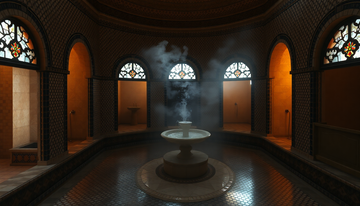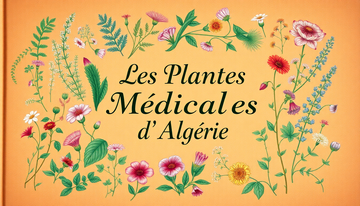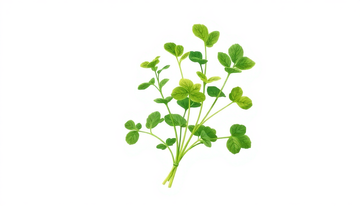The hammam has held a central place in Algerian culture for centuries. More than just a bath, it is a genuine ritual of purification and relaxation, deeply embedded in traditional lifestyle. Today, as the modern world accelerates, more and more Algerians are rediscovering the benefits of this ancestral practice.
The History of the Algerian Hammam
The origins of the hammam date back to antiquity when the Romans introduced this tradition to the Maghreb region. Over the centuries, the hammam became deeply rooted in Algerian society, evolving into a place of social gathering, exchange, and well-being.
In the past, the hammam was not only a place for physical purification but also a social space where women gathered to talk, share, and relax away from the eyes of men. It was also a venue for passing down traditions and body care techniques.
Preparing for the Hammam
Before going to the hammam, mental and physical preparation is essential. The mindset is crucial: one must leave daily worries behind and focus on the present moment.
Essential accessories for the hammam include black soap, a kessa glove (exfoliating mitt), ghassoul (natural clay), and essential oils. Some women also bring natural masks, towels, and appropriate sandals.
The Steps of the Traditional Hammam
Once there, the hammam ritual unfolds in several stages. The first is sweating, where the body is exposed to humid heat to open the pores and prepare the skin for exfoliation. Next is exfoliation, performed with the kessa glove, which removes dead skin cells and stimulates microcirculation.
After exfoliation, lathering with black soap, rich in vegetable oils, deeply cleanses and hydrates the skin. Finally, rinsing with cool water closes the pores and invigorates the body.
Specific Hammam Treatments
Beyond the basic ritual, the Algerian hammam offers numerous specific treatments. Masks made from clay (ghassoul) or essential oils nourish and deeply regenerate the skin. Traditional massage techniques promote muscle relaxation and overall well-being.
The Benefits of the Hammam
The benefits of the hammam are both physical and mental. Physically, it helps purify the skin, stimulate blood circulation, and relieve muscle pain. Mentally, it provides a moment of relaxation and letting go, fostering overall well-being.
The Modern Hammam
Although the traditional hammam is still prevalent in Algeria, it has adapted to societal changes. Today, many modern hammams, especially in Algiers and other major cities, offer high-end services while preserving ancestral traditions.
Traditional Hammam Products
Some products used in the Algerian hammam have become iconic symbols of local culture. This includes black soap, ghassoul, and argan oil, which are not only used in rituals but are also valued for their cosmetic properties.
Post-Hammam Rituals
After the hammam, it is important to take time to rest and rehydrate. This is an opportunity to extend the wellness experience by enjoying mint tea or lounging on a cozy bed.
Conclusion
The Algerian hammam is much more than just a bath. It is a true ritual of purification and relaxation, integral to the country's culture. Today, as the modern world speeds up, more Algerians are rediscovering the benefits of this ancestral practice, offering an authentic moment of well-being.






